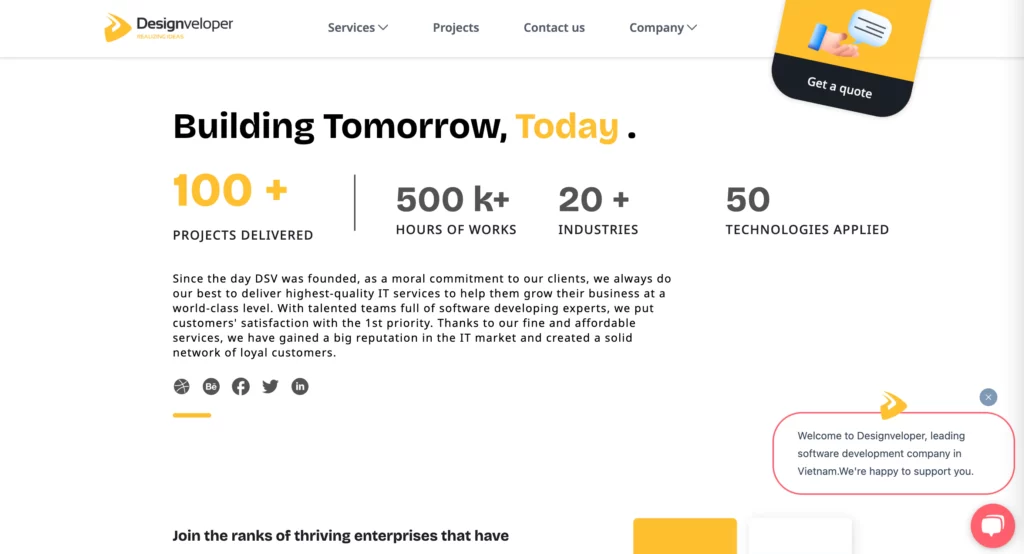Artificial intelligence (AI) is no longer a new technology, but a mainstream economic driver. Analysts believe that AI may contribute US$15.7 trillion to the global economy by 2030. The world AI market has already exceeded US$638.23 billion in 2024 and will exceed US$1.81 trillion by 2030. Companies are scrambling to implement AI; currently, approximately 72 % of businesses have implemented AI in one way or another. These statistics demonstrate why every person is eager to know how to make money with AI, the opportunities are enormous.
1. Develop AI‑powered SaaS Products

Developing software-as-a-service (SaaS) software with the help of AI can provide recurring revenue. The generative AI market is estimated to be worth US$37.89 billion in 2025 and is projected to reach US$1,005.07 billion in 2034 with a compound annual growth rate (CAGR) of 44.2 %. This blistering expansion indicates that companies require specific software that involves large language models, computer vision or predictive analytics. Business people will be able to create subscription-based AI tools that address a particular issue, such as code generation, automated customer support, or real-time data analysis, and collect monthly payments.
Example: a streaming service like Netflix applies machine-learning algorithms to make recommendations. The recommendations earn approximately US$1 billion per year since users spend more time on the service and watch more content. A less expensive or more user-retention-friendly SaaS product would have the same effect on a niche level.
2. Offer AI Consulting and Integration Services
Lots of companies understand that AI is significant but do not have in-house experience. As 72% of the companies already use AI, and the market is projected to surpass US$1.81 trillion by 2030, consultants will be needed more than ever. Consultants are able to assist with defining use cases, tool selection, custom model development, AI integration with existing systems and staff training. With the increase in the use of AI in various industries, the companies will be willing to pay a premium to get advice that enhances efficiency, minimizes risk, and provides quantifiable returns. This is a credible answer to the question of “how to make money with AI”.
3. Create and Sell AI‑generated Content
Generative AI can create articles, advertising copy, videos, art, voice-overs and music. The fact that the generative AI market has a CAGR of 44.2 % between 2025 and 2034 shows a high level of adoption. Artists are able to create digital products, such as stock photos, social-media graphics, game assets or custom illustrations, using text-to-image and text-to-video models, and sell them on marketplaces or their own storefronts. Large language models can be used by writers to draft ebooks or blog posts and then edit them to make them accurate and in their own style before publishing. Generative models speed up the production process, but human supervision is required to guarantee originality and legal safety.
4. Build and Maintain AI Chatbots and Virtual Assistants
Conversational agents are now part of everyday life, so there are many answers to the question “how to make money with AI”. Tools like ChatGPT attracted over 100 million unique visitors within months of launch and captured roughly 62.5 % of the consumer AI‑tool market by late 2024. Businesses want similar capabilities to provide 24/7 customer service, handle bookings, or manage internal workflows. Developers who can design bots tailored to a company’s processes can earn income through build‑and‑maintain contracts. For example, the Song Nhi virtual assistant developed by Designveloper helps users track spending through simple chat commands. This kind of assistant can be adapted for other niches, such as mental‑health support or employee onboarding.
5. Provide Data Labeling and Annotation Services
AI systems require high‑quality labeled data to learn. As more companies deploy machine‑learning models, the need for annotated text, images, audio and video is growing quickly. Many tasks—like tagging customer emails or marking objects in photos—do not demand deep technical skills. Providers can recruit and train teams of annotators, handle quality control and deliver datasets to clients on a per‑item or per‑project basis. Because up to 30 % of hours worked in the U.S. economy could be AI‑automated by 2030, offering services that enable automation positions you on the right side of this shift.
6. Build AI‑enhanced Ecommerce and Personalization Engines
Retailers and brands can figure out the way to make money with AI through personalized experiences. AI can analyze browsing patterns, purchase history and social‑media signals to recommend products. The Product School notes that Amazon’s recommendation engine boosts cross‑selling and upselling opportunities and is a key driver of its sales growth. Similarly, Sephora’s Virtual Artist tool allows customers to try cosmetics virtually and has led to higher engagement and sales. Entrepreneurs can build recommendation systems or plug‑ins for online stores, license them to merchants and earn from subscription fees or revenue‑share agreements.
7. Offer AI Training, Courses and Educational Content

As AI adoption accelerates, the shortage of skills creates opportunity for educators. More than 97 million people will be working in the AI space by 2025, and many will need training. Course creators can develop beginner‑friendly tutorials on prompt engineering, model fine‑tuning, AI ethics or domain‑specific applications. They can sell self‑paced courses on e‑learning platforms, host live workshops or provide corporate training. Blogging and social‑media content can also attract sponsorship deals or affiliate commissions from AI tools.
8. Join AI Affiliate Programs and Marketplace Platforms
Major AI providers offer referral commissions or revenue splits as a way to make money with AI. For example, some generative‑AI platforms pay affiliates for new customers who subscribe to paid tiers. Others host marketplaces where users sell custom prompts, plug‑ins or micro‑models. The explosive growth of user bases—ChatGPT attracted hundreds of millions of visitors—creates large audiences looking for add‑ons and premium features. Affiliates who create guides or templates can earn passive income by sharing links and helpful resources.
9. Develop AI Solutions for Healthcare and Wellness
Healthcare is ripe for AI innovation. The wearable AI market alone is forecast to reach US$180 billion in 2025, driven by devices like smart watches. Startups can build machine‑learning models that analyze sensor data to detect health issues early, provide personalized fitness plans or support telemedicine. Designveloper’s Ordoclic project shows what is possible: the platform lets patients schedule appointments, request medications and receive virtual consultations while giving doctors tools to manage documents, prescriptions and payments. Similar systems that address specific medical niches offer strong revenue potential, especially as populations age and health spending rises.
AI can help businesses and individuals make better financial decisions. Tools that analyze cash‑flow data, forecast revenue or automate expense tracking save time and reduce errors. The Song Nhi assistant mentioned earlier demonstrates how conversational interfaces can simplify personal finance management. On a larger scale, AI models can monitor markets and generate insights for corporate finance teams. When building such tools, developers must follow financial regulations and emphasize transparency. Although AI could displace millions of jobs, the World Economic Forum predicts a net gain of 78 million jobs by 2030; automation frees people to focus on higher‑value work, and software that boosts productivity will be in demand.
Designveloper: A Proven Partner for AI‑driven Solutions
When it comes to AI‑enabled software development, Designveloper has deep experience and a strong track record. Founded in 2013 in Ho Chi Minh City, Vietnam, the company has over 12 years of experience. More than 100 developers, designers, QA engineers and product strategists work together to turn bold ideas into high‑impact digital products. To date, the team has delivered over 100 successful projects, partnered with 50+ long‑term clients and logged over 500,000 working hours across 15+ countries and 20+ industries including fintech, healthcare and logistics. The company’s core services span web and mobile development, custom software development, cybersecurity consulting, VOIP solutions, UX/UI design and AI integration. As an official Meteor partner, Designveloper uses modern real‑time JavaScript frameworks to create high‑performance applications.

From a project perspective, Ordoclic is a healthcare platform that allows patients to book appointments, request medications and receive telemedicine, while enabling doctors to manage documents and payments. Chloe Ting’s fitness hub provides personalized workout plans, nutritional guidance and community features. Song Nhi is a virtual assistant that manages personal finances through conversational input, and Lumin is a document management platform that lets users view, edit, sign and share PDFs easily. These projects show how Designveloper combines technical expertise with AI integration to deliver solutions that create real business value.
Why Partner with Designveloper?
We at Designveloper focus on more than just writing code; we build long‑term partnerships. Our team asks the right questions, collaborates closely with clients and designs solutions that support clear business goals. With our experience across diverse industries and our commitment to quality, we help organizations knowing how to enhance their products and services, thus knowing how to make money and generate revenue with AI. If you’re exploring how to make money with AI, partnering with an experienced development company can accelerate your journey.
Conclusion
AI is transforming the global economy and creating new revenue streams for entrepreneurs and businesses. Whether you develop SaaS products, offer consulting, sell AI‑generated content or build health‑tech platforms, opportunities abound. The key is to focus on real problems and deliver clear value. With the market expected to grow rapidly and investments pouring in, those who act now will be well positioned to profit from AI’s evolution.


